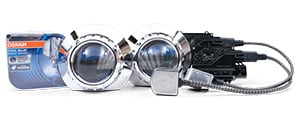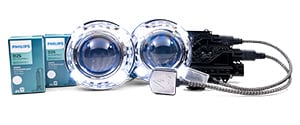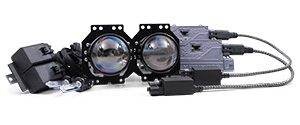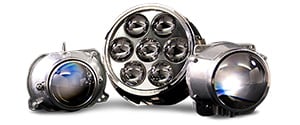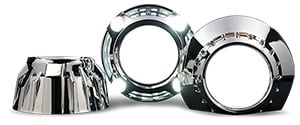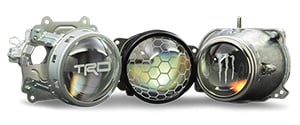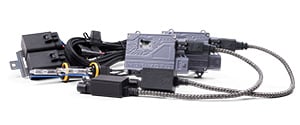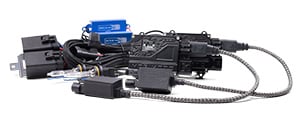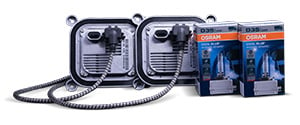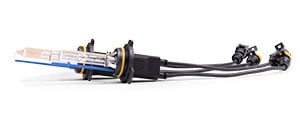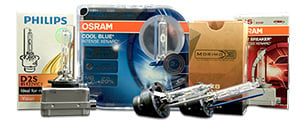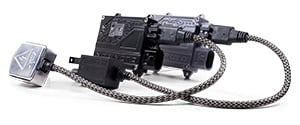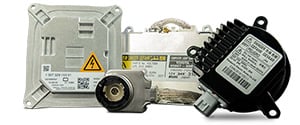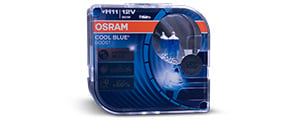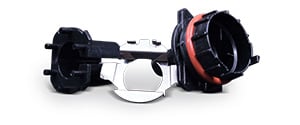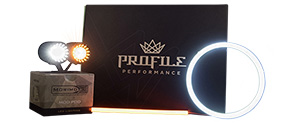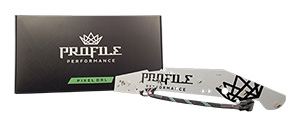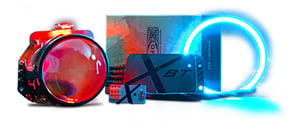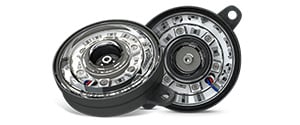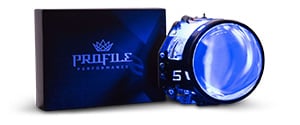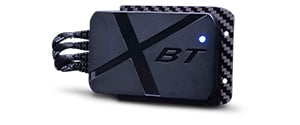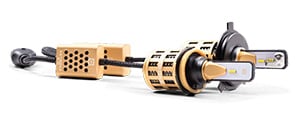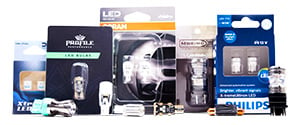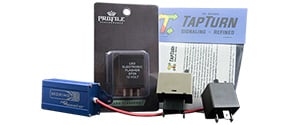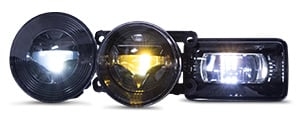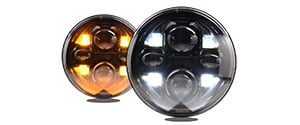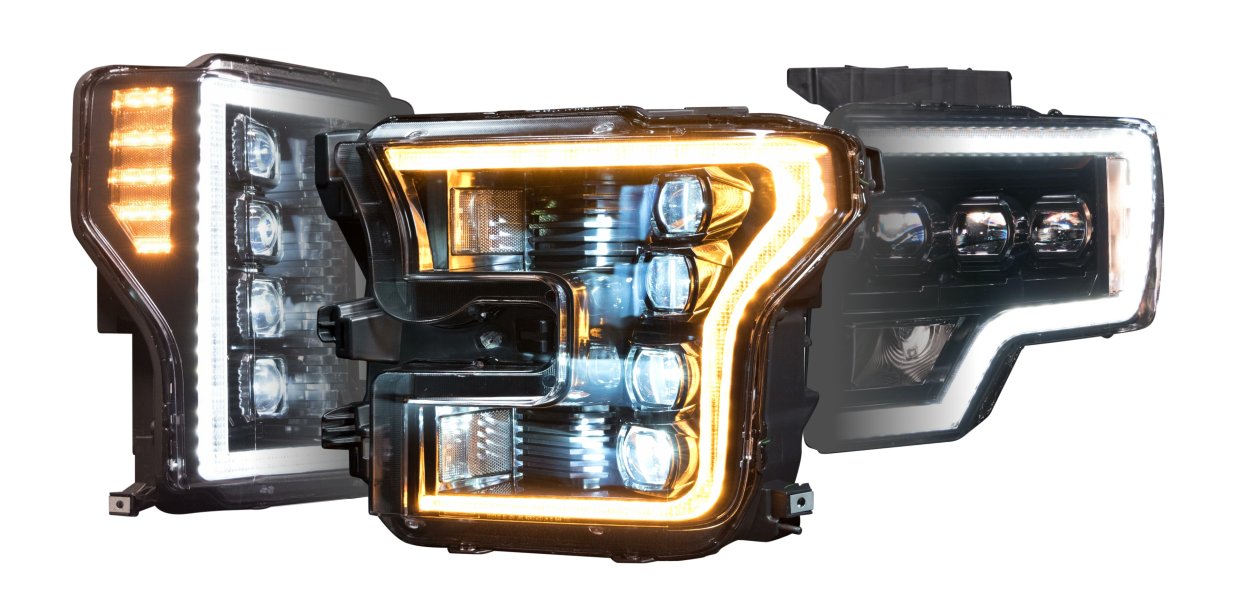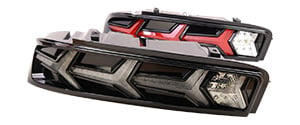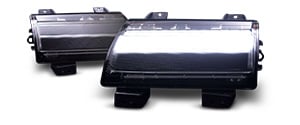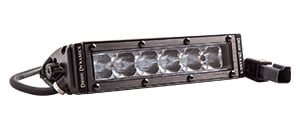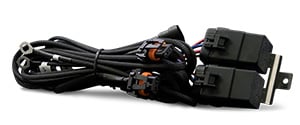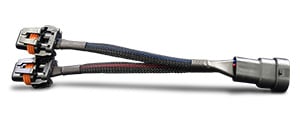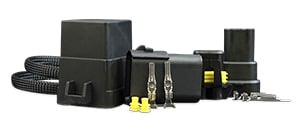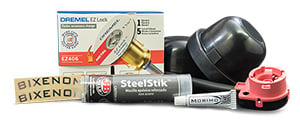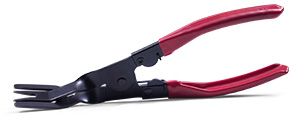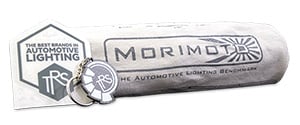One of the more difficult decisions to make when it comes to accent lights is selecting between different types of LEDs. Depending on the needs of your lighting environment, the features of certain LED accent lights will most definitely serve you better than others. That’s why it’s important to know about each type of LED before you put your money down on one particular package. Once you know all about the best LED strip lights on the market, you’ll be better equipped to make a choice that’s most suited for your vehicle.
In LED terminology, “package type” refers to the packaging of the die within a particular LED device. Package types range from basic DIP LEDs, to packages that offer a wider range of options, like the SMD.
The DIP LED was first introduced in 1962 by inventor Nick Holonyak, whose creation sparked the era of the modern LED. However, LED technology has grown in leaps and bounds over the last 50 years, to the point where it’s radically redefined the options drivers now have as far as headlights.
THE DIP LED LIGHT
For more than thirty years, dual in-line package (DIP) LED technology dominated the LED lighting market. Despite the development of other options in the five decades since, DIP LEDs remain relevant for various uses, such as with the lighting up of public display signs. The initial popularity of DIP LEDs was due to the longevity and luminosity of such lights. Though it’s been somewhat superseded during the 21st century, DIP technology remains a powerful lighting tool with impressive and far-reaching luminosity.
DIP LEDs can easily be identified by their unique shape, which resemble that of a caplet or bullet on top. The case around the diode is made of epoxy and plastic, which function like a lens that focuses the light on direct objects. On one side of the case is a flat edge, which helps to identify which side the cathode is located. If you’re handling a DIP light for the first time, it’s relatively easy to place how things go simply by noting the visual indicators of the light itself.
In households, DIP LEDs are commonly seen on electronic devices, where the light is ideal for indicator functions because of its brightness and ease of integration. The diodes for DIP LEDs can be purchased in quantities for a range of uses. Due to their easily applicable function, users will often solder them onto circuit boards. This way, the user can receive information from a device without the presence of a display screen. In this capacity, DIP LEDs reduce the function of indicator lights into simple flashes that are clear to the naked eye from across a room, but use little energy.
Most DIP LEDs generate three or four lumens per LED. They range in voltage from 5v to 24v, but the most universal voltage is 12v. By themselves, they use anywhere from 0.05 to 0.08 watts, which correlates to a range of 35 to 80 lumens in each watt.
Today, the use of DIP LEDs is rare, as they’re neither manufactured for newer vehicles nor produced for the aftermarket.
THE SMD LED LIGHT
An alternate to DIP that has grown in popularity is “surface mounted device” chips, or SMDs. As a relatively diverse type of LED, SMDs are used in a range of devices, from strip lights and bulbs to cell phone signals. Compared to DIP LEDs, SMDs use smaller chips, and this helps with their versatility. As such, SMD LED lights have proven to be adaptable for a range of uses, such as for headlights and in passenger compartments of vehicles.
In addition to versatility, SMD lights also have the capacity for a more complex range of designs. A prime example is the SMD 5050 chip, which offers red-green-blue (RGB) capabilities. Since those three colors are the primary colors of light, the number of colors that this chip can produce is unbounded. By contrast, DIP LEDs can only produce one color on a given device. In cars, trucks and vans, the RGB capabilities of SDMs make it possible for interior functions to be lighted in a range of colors.
Another difference between DIP LEDs and SMD chips is the shape. Unlike the cone design of the DIP LEDs, SMDs are flat and square. Furthermore, SMD chips can have two, four or even six contacts, as opposed to the anode/cathode pair of the DIP.
Additionally, on each SMD diode, there’s also an individual circuit. Basically, DIPs have a simpler, more compact design than SMDs, yet SMDs offer a wider range of capabilities as far as lighting is concerned.
FEATURES OF THE SMD LIGHT
Due to its ability to include three diodes on one chip, the SMD LED light has been a major advancement for the lighting industry. With RGB LED light strips, the adjustment of any one diode can form a distinct color. As such, SMDs are among the most popular for use on flexible LED light strips for both exterior and interior use on vehicles. Currently, even the latest Morimoto and ACME XSB & Superflex strips use SMD LEDs.
In terms of size, SMD led lights offer a wide variety, but the two most common are sizes 3528 and 5050S. The chips on the 3528 are 3.5mm wide, whereas the 5050S contains 5mm chips. Smaller chips are manufactured for electronics and handheld devices like smartphones and pads. Whenever you see a tiny light on one of these devices that activates before or after a screen is in use, it’s an SMD LED light.
On 24v and 12v LED light strips, SMD chips will normally generate four or five lumens per diode on each chip. On a 3528 SMD LED light, each chip will draw between 0.05 and 0.08 watts. On a 3550 SMD LED light, each chip will draw between 0.15 and 0.24 watts.
SMD LIGHTS INSIDE OF VEHICLES
Inside of vehicles, SMD LED lights can totally transform the appearance of dashboards. One of the most beneficial characteristics is the brightness and luminosity that such lights offer, the likes of which is easier on the eyes and is arguably more attractive than conventional interior lighting. With their luminous glow, SMDs stand out better from the panel of a dashboard, which allows you to see the indicators and controls better once the sun goes down.
SMD lights also help you stay alerted to important things about your vehicle, such as the speed at which you’re driving, the level of gas consumed and the mileage traveled during a given drive. When the hour arrives where the lights must be activated in your vehicle, SMD LEDs can shine all of your dashboard features up with a neon-like quality that’s catching to the eye. Furthermore, SMDs can render the features within the passenger compartment warmer, more comforting and less dull for you and your passengers.
THE COB LED LIGHT
The latest innovation on the LED front is the “chip on board” light, also known as the COB. As with the SMD, COB LED lights feature several diodes on each chip, but otherwise the two LED types are very different. A typical COB chip will feature at least nine diodes. As such, COB LED lights offer great capacity without the need for increased physical space, and they are easily applicable for a range of settings.
Another major contrast between the SMD and COB LED light is that SMDs need a circuit for each diode, whereas COBs only use one circuit and two contacts per chip, no matter how many diodes are involved. Due to this simplicity of function, COBs are one of the easiest and most efficient options among LED lights. They are a good choice if you want a set of headlights that are optimally bright, but that don’t have any technical complications and that do conserve energy.
ADVANTAGES OF COB LIGHTS
The biggest advantage of all to the COB LED light is the number of lumens generated with each watt, which is vastly superior to the ratios offered by DIP and SMD LED lights. However, COBs also have a disadvantage in that the chips require multiple channels for adjustments to be made on the color output. That means while COB LED lights are effective as a one-color lighting option, they’re not applicable for RGB LED light strips. As far as headlights are concerned, a set of COB lights best serve the function of illuminating the road ahead in bright white.
Before the advent of COB lights, LEDs in general were thought to be unconventional as far as lamps go, due to the fact that several different LED sources were needed to generate a substantial lumen output. With the arrival of the COB chip, it suddenly took only one chip to generate lumens of substantial size. For the first time ever, consumers now had the option of a lamp that was standard in function yet low on energy usage. In vehicles, this translates to less drainage on the battery, which means you don’t have to feel guilty about showing off the more decorative, low panel COB lights in off-road settings.
Hybrid LED is a Morimoto invention designed to replicate the intensity and smoothness of COB LED-based accent light, but without the unreliability that sometimes accompanies the latter option.
Hybrid LED uses SMD LED Chips with a silicone phosphor coating to help add uniformity to the appearance of the light. The combination of SMD and COB characteristics make Hybrid LED a reliable and attractive option for motorists.
On the Hybrid XSB 3.0 halo, phosphorous silicone coats the front face, which neutralizes the light with a unique, uniform intensity unlike anything else on the market. In effect, Hybrid LED offers the best characteristics of SMD and COB headlights.
LED LIGHTS AS HEADLIGHTS
Since 2004, the use of LEDs has undergone a series of developments as an option for automotive headlamps. That year, the launch of the Audi A8 W12 marked the first use of LED headlights on a car. Two years later, the first low beam LEDs were uniquely produced and implemented for the 2007 Lexus LS 600h.
In the years since, LEDs have been further developed for Audi, Cadillac and Mercedes Benz models. While LED headlights have come to embody the high-tech modernism of today’s cars, retrofitting kits can be purchased for older vehicles as well.
HALOS
On vehicles, the halo is a luminous lighting option for the inside rings of headlights. Alternately, halos are called “angel eyes” due to their ring shape and placement at the head of the vehicle. Halos were first unveiled by BMW at the turn of the millennium to distinguish the automaker’s newer vehicles. At the time, the automotive industry was just starting to unveil new alternatives to the prevailing dominance of halogen lights on vehicles. Since then, halos have grown in popularity as an enhancement for vehicles of various makes and models.
Halo headlights are produced in the following varieties:
* Regular. The angel eyes used in a lot vehicles are from incandescent bulbs. The unique effect of the rings is made possible by the combination of bright and dark spots. Combined, the spots create an effect that is attractive and soft on the eyes.
* CCFL. Lights that consist of cathode fluorescent lighting tubes utilize gas to emit a brighter light than regular rings. Therefore, the overall effect is similar to that of the neon light, which involves a similar gas-inside-a-tube function to produce its unique look.
* LED. Halo rings that run on light-emitting diodes can generate light in a range of colors. However, certain colors aren’t legally allowed for driving and are only appropriate for gimmicky use in a parked vehicle. Of the colors that are permitted, LEDs make a preferable choice over halogens on a number of fronts, most notably in terms of light quality and efficiency.
CHECK OUT THESE TRS TIPS FOR INSTALLING LED HALOS IN YOUR HEADLIGHTS:
The halo ring marked a new advancement in the realm of headlights, which had previously been limited to bulkier shapes and parabolic reflectors. The first line of cars to feature the halo was BMW’s 2001 5-Series of luxury sedans. The carmaker itself referred to this new, unique headlight type as “corona rings.”
In terms of lighting, halos broke ground on two fronts:
1. The neon-like look of the halo offered a more stylish alternative to conventional headlights.
2. The halo could also function as a daytime light.
Though the halo was initially powered by halogen lights, which shared light along a fiber optic system, the halo was quickly transferred to a LED source, which rendered the new lights far more energy efficient. Soon enough, halos were adopted by other automakers, really — we consider them the birth of basically all LED-based accent lighting found on cars today. Virtually every major automaker is using some illuminated LED array on the front end of their cars to as a piece of brand identity that does double-duty as a daytime running light and in some cases, a turn signal too.
By the late 2000s, more and more motorists were becoming eager to purchase cars that were equipped with this new headlight type. Swiftly, this demand for new vehicles with halos spurred the emergence of halo kits for older vehicles.
SWITCHBACK LIGHTS
Switchback LED lights are unique in that they switch from one color to another and back. For a vehicle headlight, a switchback LED light strip can be used to turn from white to amber and back. That way, the same light can be used for ambient visibility as well as turn signaling. While one light stays white, the other can flash between white and yellow to signal for a turn in a particular direction, be it left or right.
At the front of a vehicle, switchback flexible LED strip lights facilitate a more compact assembly of lights. Instead of needing separate headlights and signaling lights, everything can be combined into twin strips on each side of the bumper. Therefore, the circuitry involved with switchback lights is less convoluted, while the light itself draws lower amounts of energy.
Here at The Retrofit Source Inc., we strive to provide state-of-the-art lights for today’s vehicle owner. Whether you drive a new or vintage car, our LED light kits can transform the appearance of your vehicle. We’re passionate about all aspects of automotive lighting, and our goal is to see each customer fit their vehicle with the best headlights for maximum performance.
For more than a decade, the lights in our inventory here at TRS have made driving easier and most definitely more stylize for owners of all types of vehicles. When people fit their vehicles with the LED Accent lights we sell, they enjoy greater confidence about taking their cars out in the dark of night.
With today’s lighting technology, drivers are able to cultivate their vehicles with unique types of lighting. Whether a given motorist wants blue LED light strips or red LED light strips for their ride, it all comes down to personal choice and individualism, and products such as the new XBT color changing accent lights from Morimoto would be just the ticket for the guy who can’t choose just one color.
As the industry leader in automotive headlights for more than 10 years, we have an extensive background with helping customers and pointing people in the right direction. When a customer comes to us with hopes of transforming a car, truck or van into a more modern, lively and stylish vehicle, we point them in the right direction with the products we offer. As a result, we’ve built up a loyal customer base with people from all over who seek better headlights for their vehicles.
Our commitment to our customers is further demonstrated by the support we offer to each and every vehicle owner who comes to us with questions and concerns. At TRS, we back up everything in our inventory. Our products are also verified and tested in-house to ensure everything is in maximum working condition.
With your mind on a new pair of LED headlights, TRS will help you find the perfect match for your vehicle. To learn more about what The Retrofit Source Inc. can help you achieve with your car, visit us online today.
.png)
